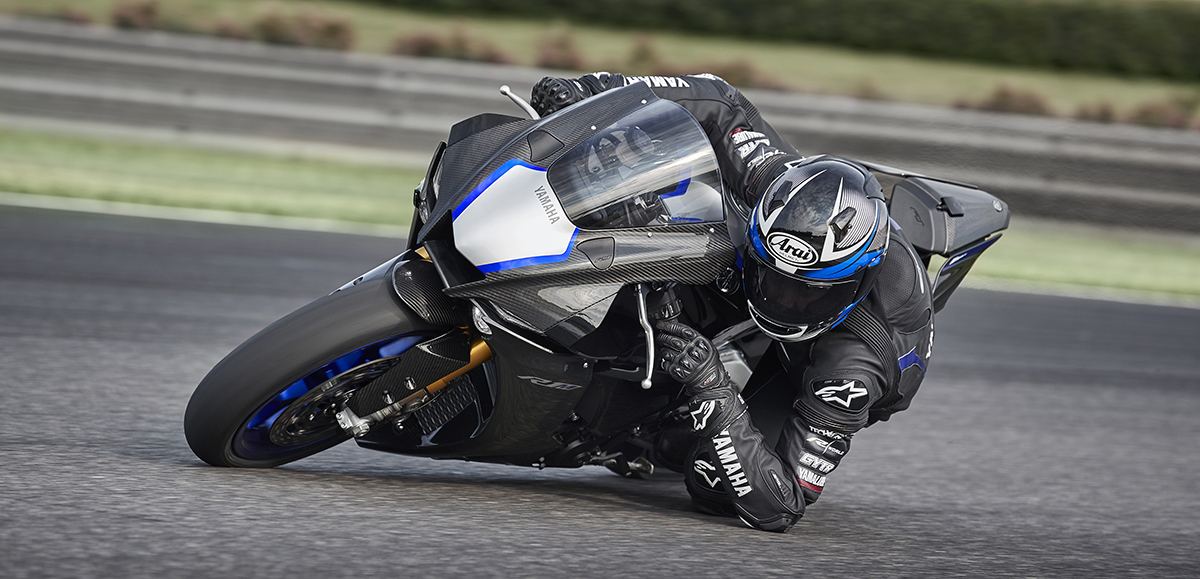In an unusually early unveiling at the Laguna Seca WSB round in California, the firm revealed a host of changes aimed at improving the performance, appearance and cleanliness of its range-topping superbike. The underlying bones of the bike are the same as the existing model, which has been with us since 2015, but the R1 gets new bodywork and significant engine updates to meet Euro 5 without suffering a drop in power.
Let’s start with the engine changes. Peak power is unaltered, with 147.1kW at 13,500rpm, but that’s a notable achievement as Yamaha has cleaned up the engine’s exhaust and noise emissions to meet the Euro 5 limits that will be phased-in across the EU in 2020 and 2021. To achieve that goal, Yamaha has given its cross-plane-crank inline-four changes including redesigned finger followers and new cam profiles, new intakes with repositioned throttle valves and fuel injectors and revised cooling for the exhaust ports. The exhaust system is also new, with no fewer than four catalytic converters, while the engine’s bottom end gets improved crankshaft lubrication and a more compact oil pump. Tweaks extend to the transmission, with a wider 2nd gear pinion for better efficiency. Noise is reduced via an improved silencer and sound-absorbing heat shielding around the engine.
The changes to the bike’s styling are similarly subtle yet extensive. Almost every panel is new, but the overall look is an evolution of the existing bike’s style. The nose is reshaped while retaining the M1-style intake shape and distinctive, under-slung headlights, while the side panels now integrate more smoothly with the fuel tank, which itself is also mildly reshaped. The rear bodywork isn’t changed apart from on the higher-spec R1M, which now gets a carbon-fibre tail to match its carbon front fairing.
The theme of exotic materials is continued elsewhere in the bodywork, too; the metallic parts surrounding the exhaust are now made of titanium, while the air intake duct is aluminium to add rigidity to the nose. Yamaha says the new bodywork offers 5% better aerodynamic efficiency compared to the previous version.
Of course, you can’t have a new generation of superbike without some addition electronic gadgetry, and the R1 is no exception. The existing model is already well equipped with an IMU-assisted stability control system and multiple riding modes, but the new version gains a switchable brake control system, altering the behaviour of the ABS. In ‘BC1’ mode, the ABS is consistent, using a fixed level of sensitivity, while ‘BC2’ uses the IMU to alter the ABS in response to bank angle. A three-setting engine brake management system is also added, giving switchable levels of off-throttle retardation, and the bike’s launch control is upgraded.
On the chassis side, changes are subtle. The stock R1 gets revised settings for the 43mm Kayaba forks and rear shock, with new spring rates at the front, and a modified steering damper. The R1M’s Ohlins electronic suspension is improved with the adoption of the latest NPX gas-pressurised forks and modified preload settings for the rear shock.
As in previous years, the R1M’s limited production run will be sold via an online pre-ordering system which opens on 25th July. The standard mass-made R1 will reach dealers in September this year. That relatively early availability explains why Yamaha has launched the bike now rather than waiting until the big shows at the end of the year, and by getting the bike on sale this year Yamaha may be able to homologate the machine to race before the end of the 2019 WSB championship rather than waiting until next year to make its on-track debut.

Words Ben Purvis
Pic Yamaha











